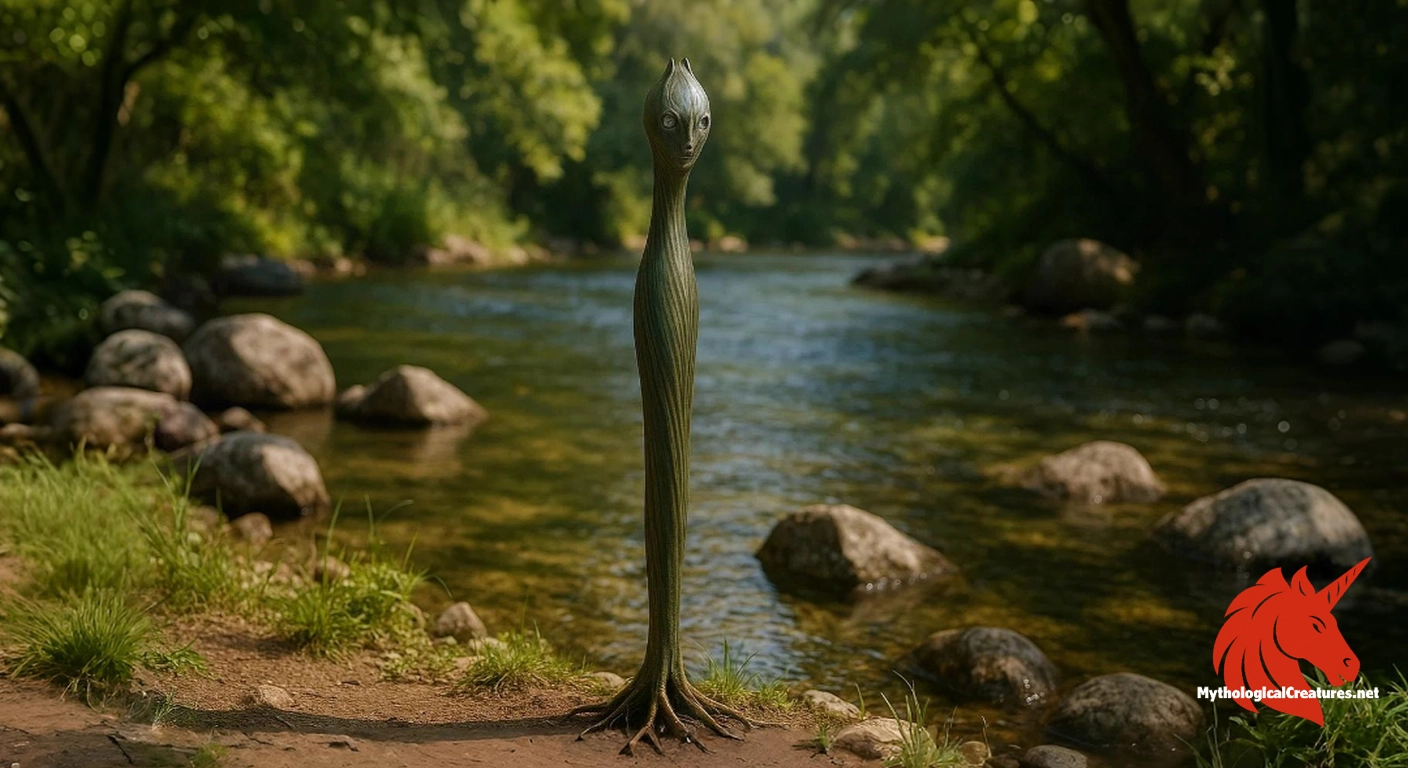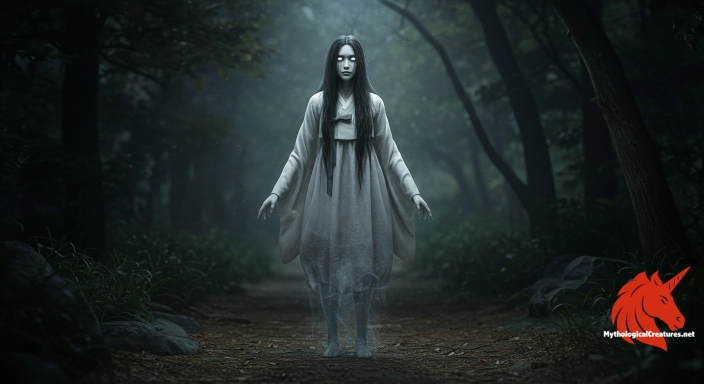Syrinx: Syrinx, an Arcadian nymph from classical Greek mythology, is renowned for her metamorphosis into reeds to escape the unwanted pursuit of Pan, which led to the creation of the panpipes.

Syrinx
Syrinx - Her metamorphosis into reeds explains the origin of the panpipes and symbolizes purity, loss, and the transformative power of nature.
Origins & First Encounters
Syrinx emerges in Greek mythology as a figure of ethereal beauty and tragic defiance, celebrated for her intrinsic connection to nature. Born in Arcadia, she belonged to a pantheon of woodland deities who embodied the untamed splendor of the natural world. Her early mythological attestation places her among the devoted followers of Artemis, a deity who cherished chastity and solitude. The narrative surrounding Syrinx captures the delicate interplay between desire and autonomy in ancient tales. Evoking an aura of natural grace, her story is emblematic of the transformative power inherent in myth. The intimate relationship she shared with the wild landscapes of Arcadia further cements her place in the tapestry of Greek lore. While her identity is primarily linked to her pursuit by Pan, her myth also encapsulates themes of purity and escape. Her metamorphosis into a set of reeds not only underscores her defiant spirit but also immortalises her essence in the ritual of music, as these reeds later become the cherished instrument of the god who pursued her.
Source Texts & Tale Variants
Ancient texts such as Ovid’s Metamorphoses serve as the primary repository of Syrinx’s myth, providing a lyrical yet succinct account of her transformation. Although classical sources concentrated on her fleeting encounter with Pan, subsequent literature expanded on her character and the circumstances around her metamorphosis. Notable fragments from later Hellenistic accounts often introduced regional interpretations that further enriched the narrative with local colour. Diverse story variants exist wherein some traditions accentuate her divine connection with Artemis and the forest spirits. Other traditions integrate her story with a broader tapestry of metamorphosis myths, comparing her fate to other figures who transformed to preserve innocence. The variability in text and imagery across sources highlights the versatility of her myth. Both literary traditions and oral storytellings of ancient Greece have reimagined her tale through the centuries. These variants together weave a complex picture of a nymph whose legacy meanders through both canonical texts and folk narrative adaptations.
Form & Powers
Syrinx is recurrently depicted as possessing an almost otherworldly, delicate form that mirrors the natural elegance of the Arcadian wilderness. Her portrayal in ancient art varies from a lithe and graceful maiden to an embodiment of the soft, unyielding quality of reeds. Classical representations emphasise her slender limbs, supple posture, and a visage that radiates a sense of ethereal calm. As a follower of Artemis, she is sometimes shown garbed in simple, flowing attire that echoes her affinity with nature rather than lavish adornment. In many artistic renditions, her beauty is portrayed with a touch of wistfulness, capturing both the innocence of youth and the poignancy of impending transformation. Detailed descriptions in poetic accounts highlight the smooth texture of her skin and her wide, expressive eyes reflecting the clear sky. Upon her metamorphosis, the very essence of her being is transmuted into elongated, graceful reeds, each one marked by gentle curves and subtle variations in tone. This dual existence as both a living nymph and a natural instrument symbolises a unique fusion of human form with the elemental beauty of the landscape.
Regional Faces
The myth of Syrinx has traversed boundaries, taking on varied forms across different regions and cultures of the ancient Mediterranean. In Arcadia, her story is deeply embedded in the local landscape, accentuating the raw, untouched beauty of the wilderness, while in other parts of Greece, she is sometimes depicted with an added layer of mysticism and elemental power. Certain regional adaptations imbue her character with additional attributes, such as an elevated status among local deities or as a symbol of unyielding nature’s force. In some local legends, her transformation is framed as an act of both escape and self-preservation, reflecting a nuanced understanding of agency in the face of divine pursuit. Variations also include subtle differences in her depiction, with some cultures envisioning her as more ethereal and others as a tangible representation of nature’s resilience. Her story has resonated across cultural borders, influencing local artistic expressions and ritual performances that celebrate the themes of metamorphosis and the sanctity of nature. The transformation of her form into reeds serves as a metaphor that is readily adaptable to varied local narratives. Consequently, regional nuances have enriched her myth, ensuring its enduring appeal and continual reinvention in diverse cultural milieus.
Cultural Parallels
Syrinx’s narrative resonates with a rich tapestry of comparative mythical transformations across diverse cultures. Her metamorphosis bears remarkable parallels with tales such as that of Daphne, whose flight from Apollo led to her transfiguration into a laurel tree, each myth underscoring themes of escape and transformation in the face of divine pursuit. Similarly, the story of Echo, who faded into the background of mountainous landscapes, echoes themes of loss and the silencing of a voice that was once vibrant. In wider Indo-European traditions, other figures undergo metamorphoses that preserve their essence in natural forms such as flora, further underlining a universal motif of integration between mortal beings and the natural world. Like these legends, Syrinx’s fate is not solely a tale of victimhood but one of triumph, as her transformation becomes a source of beauty and musical inspiration. Comparative analysis also reveals a subtle interplay between gender, power, and nature in these myths. While the mechanism of metamorphosis varies, the recurring motif of using natural elements to evade external control remains a common thread. Such links invite reflection on how ancient societies used myth to explore complex human emotions and cultural values, transforming individual narratives into collective symbols of resistance and rebirth.
Legacy & Modern Evolution
The legacy of Syrinx has evolved significantly from her origins in ancient myth to her presence in modern cultural expression. In classical times, her story contributed to the creation of the pan flute, an instrument that resonated with the pastoral ideal and the harmonious interplay between man and nature. Over the centuries, artistic interpretations have expanded her myth, casting her both as a tragic figure and as a muse of musical invention. During the Renaissance and Romantic eras, poets and painters revisited her narrative with renewed admiration, often highlighting the bittersweet aspects of her transformation. Modern reinterpretations draw upon her myth to explore themes of autonomy, resistance, and the transformative power of art. Contemporary artists and musicians sometimes incorporate her imagery to symbolise the delicate balance between vulnerability and strength. Her story has also found new life in literature and film, where adaptations often emphasise her connection to nature and the eternal allure of metamorphosis. Ultimately, Syrinx remains a powerful symbol in modern consciousness, celebrated as a timeless embodiment of both mortal fragility and the everlasting spirit of natural beauty.
Interesting Fact
Her name directly inspired the term 'syrinx' for the pan flute, linking her myth to the evolution of musical instruments and artistic expression in ancient Greece.
Quick Creature Info
Origin:
Features:
Associations:
Our Mythic Legendary Rating:

Habitat:
Supernatural Powers:
Physical Attributes:
Abilities:
Behavior:
Lore:
References
Discover Another Mythical Legend You May Not Have Heard Of?
Uncover the mysteries of ancient folklore and expand your knowledge of legendary beings from cultures around the world.
Dare to Meet the Korean virgin ghost....
Mythical Disclaimer: The images and data on this site are derived from various historical and literary sources, but we have found that many myths often have multiple versions and interpretations across references, sometimes contradictory. As a result, these creature depictions are artistic interpretations—imaginative blends of folklore, legend, and a dash of AI guesswork. Because creature descriptions vary widely, our illustrations and accompanying information represent our best effort to honor mythology while bridging creative gaps. Enjoy these interpretations—just remember, we've done our best to respect the stories and validate available data, but in the realm of mythology, details often shift, imagination leads the way, and nothing is ever set in stone!
Curated by the Mythological Creatures Team (rev. May 2025)
